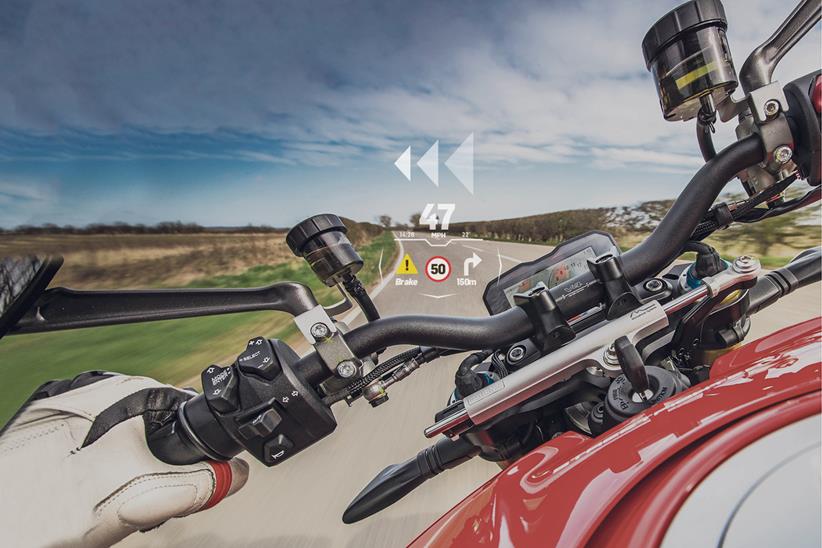Fighter pilot kit ready to roll: Aegis Rider’s new head-up display could be a game-changer
A new way to navigate while riding could soon be released onto the mass market as Swiss company Aegis Rider look set to release an augmented reality (AR) head-up display system to bolt into your lid.
Pilot production is due to begin this year and the tech is being put through its paces by test riders and will, say Aegis Rider, be a marked improvement on rival kit.
The AR can be fitted into road or race helmets and consists of a sensor and computer unit in the chin area, detachable optics above the visor and a battery pack at the rear.
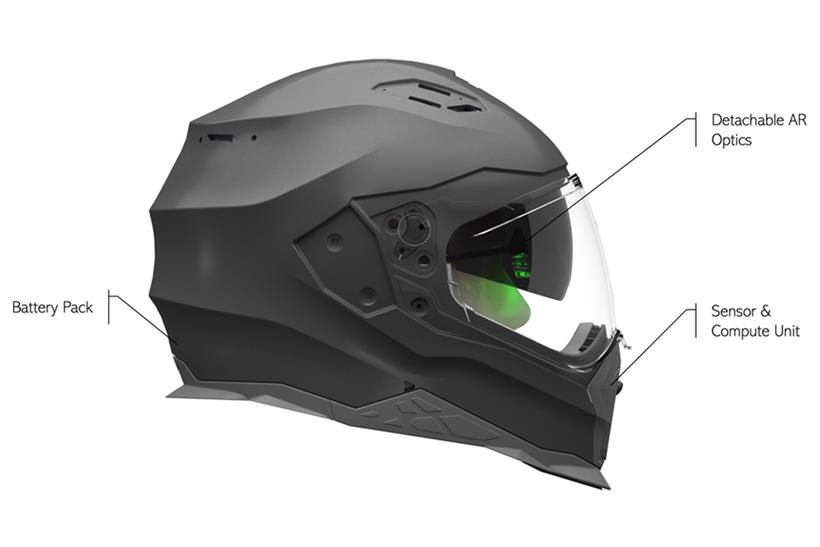
Information is relayed to the rider in real time and the system also monitors the helmet’s precise position and orientation in relation to the bike, so warnings can be superimposed at just the right spot.
The fully customisable system works in tandem with Aegis Rider’s companion app and can display such information as speed, rpm, gear selection and navigation tools.
In this week's poll we'd like to know whether you'd consider using a head-up display in your motorcycle helmet? To answer, click one response below. Thanks!
— Motor Cycle News (@MCNnews) January 17, 2023
The Aegis team say they developed the system as they were frustrated with the current status quo and the limited real-time technology available for motorcyclists and racers on track, telling prospective users: “We set out to revolutionise how content is visualised and consumed via intuitive augmented reality.”
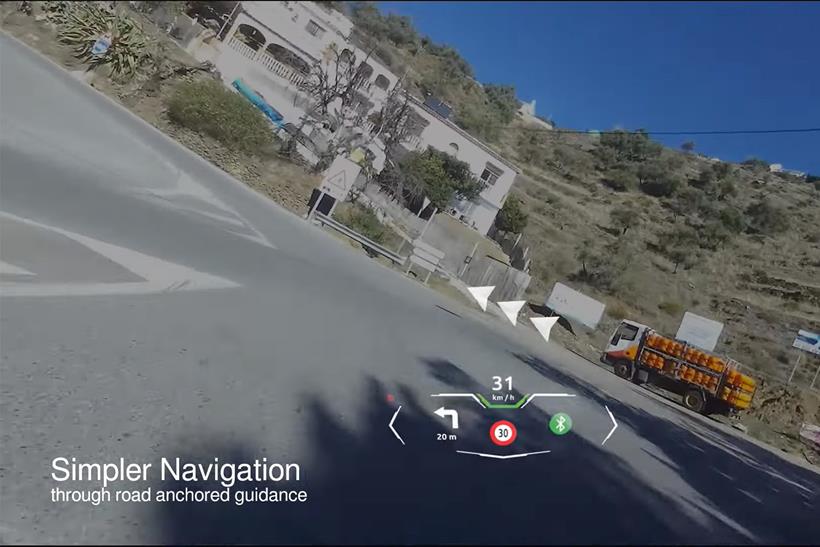
They claim one thing that separates it from current options is that the information is displayed in such a way that the rider doesn’t have to refocus their eyes to view it. Still images show the information appearing to be on the road in front in what Aegis call ‘road anchored guides’ rather than a close-up interface on the interior of the visor.
While riders are using the navigation facility, the unit will display the upcoming direction of travel, the distance to a turn or bend and a display of upcoming road geometry and curvature via the use of moving arrows or blue dots.
Additionally, the display appears to get closer to the rider as the bike slows down and further away as speed increases as the rider’s eyes are looking further down the road.
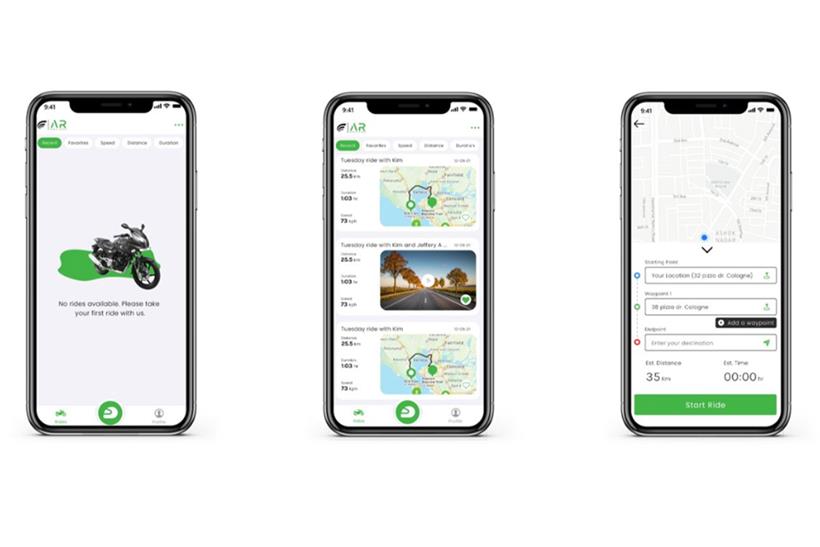
The AR app allows you to plan journeys and, when complete, will give statistics of the trip, time, distance and highlights of the ride.
Should the technology ever be given the green light to be used on UK racetracks, the app will record detailed graphs on optimal speed for the best lap and suggest cornering position. Aegis have also been working with other manufacturers to fine tune the system including Portuguese helmet maker Nexx.
Hélder Lourerio, CEO of Nexxpro said: “Before trying the system I was sceptical, as I had already tried some other similar devices. But after using the Aegis solution, my opinion has changed completely, and I think this will be the future.
“We can have so much information just in front of our eyes ad at the same time we don’t lose the concentration. As a helmet manufacturer, our first goal is safety. Aegis is, so far, the most promising tech on the market.”
MCN first reported on Aegis Rider in 2021 when the company were testing the third generation, with the latest version being the fourth round of development. See the kit in action at the Aegis Rider website.
New heads-up helmet display tech has almost limitless potential
First published 5 November 2021 by Ben Purvis

Swiss firm Aegis Rider AG is using augmented reality to create a helmet that seamlessly integrates information into the view ahead.
It’s an idea with virtually limitless potential, from providing real-time hazard warnings by highlighting threats as they emerge, to coaching the rider with suggested speeds and cornering lines, or presenting satnav instructions superimposed on the road itself.
Already undergoing tests as a third-generation prototype, the system features on-bike cameras and a central computing unit allied to sensors monitoring speed and lean angle as well as GPS data to locate the bike.
This gets cross-referenced with detailed maps that include info about speed limits and road characteristics.
Although it would be possible to display such warnings on a traditional dashboard, there’s a risk that this would take the rider’s eye off the road, so the system is integrated with an augmented reality helmet.
The system also monitors the helmet’s precise position and orientation in relation to the bike, so the warnings can be superimposed at just the right spot. Aegis Rider is supported by ETH Zurich university where company founder Simon Hecker was awarded his PhD for research on autonomous driving systems.

He said: “I ride a motorcycle myself, so I’m aware of the large gap between the safety systems of modern cars and motorcycles.
“We’ve been working on this for about a year-and-a-half and have a third iteration of working prototype now, so we’re able to ride with it and have it show relevant 3D content or objects anywhere relative to the bike and anchored in the real world.
“For example, give me a GPS location and I’ll render whatever 3D object you want there so when you ride past, you’ll actually see it rendered at that point.”
And it could all happen in real time, as Hecker explains: “With an oil spill, for example, you could go for a community-driven approach, where people can put an alert out to other riders in the vicinity, and with our system you could visualise its location.”
Initial versions combine the helmet with an on-bike computer and sensors, but the firm believe a helmet-only kit is possible.
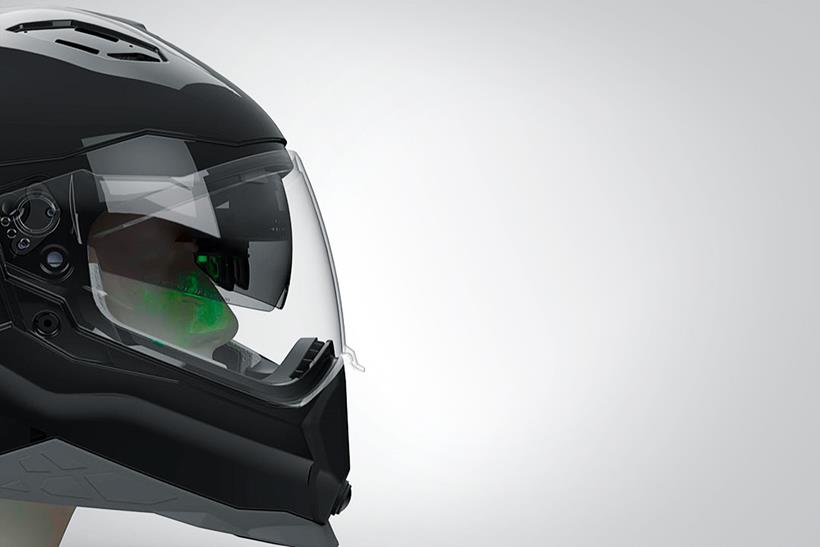
Hecker added: “If you look at a bike like the BMW R1250RT, which has a radar, an IMU, GPS etc built-in, a lot of the sensors we need are already present, and we expect that in the next two to three years we’ll also see cameras on motorcycles.
“At that stage, we should be able to have a helmet-only solution. On the other hand, the system we have now, with its own computer unit, has the advantage that it can be retro-fitted to any bike.
“In the end, we want our AR helmet to be indistinguishable from any regular motorcycle helmet. The goal is to have a wireless connection to the helmet.
“We started with four cables, then went down to two on the second iteration. Now we’re down to one cable on the third iteration and ideally we’d make it completely wireless in the future.
“The pace of this industry is so fast that there are many more opportunities down the road, even to the point where computer element could be in the cloud, transmitting directly to the helmet using 5G.”
Initially, Aegis Rider want to have a version targeting tech-savvy early-adopters in production by next summer, with later developments leading to more affordable, mainstream versions in the future.
